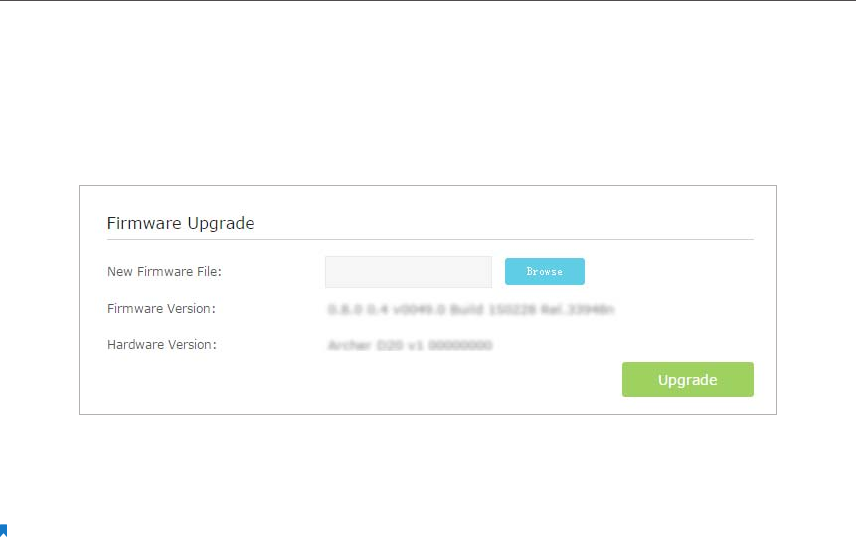User's Manual
Table Of Contents
- About This Guide
- Get to Know About Your Modem Router
- Connect the Hardware
- Log into Your Modem Router
- Set Up Internet Connections
- Bandwidth Control
- Network Security
- IPTV
- USB Settings
- Parental Controls
- Guest Network
- NAT Forwarding
- Specify Your Network Settings
- Administrate Your Network
- Appendix A: Specifications
- Appendix B: Troubleshooting

87
Chapter 13
Administrate Your Network
2. Visit http://tplinkmodem.net, and log in with the password you set for the modem
router.
3. Go to Advanced > System Tools > Firmware Upgrade page.
4. Click Browse to locate the downloaded new firmware file, and click Upgrade.
5. Wait for the upgrading and then the modem router will automatically reboot.
Note:
1. Before upgrading the firmware, it’s better to back up your current settings. For more details, refer to Back up and
Restore Configuration Settings.
2. During the upgrading process, do not turn off or reset the router.
3. The upgraded firmware version must correspond to the hardware.
13. 3. Back up and Restore Configuration Settings
The configuration settings are stored as a configuration file in the router. You can back
up the configuration file to your computer for future use and restore the modem router
to a previous settings from the backup file when needed. Moreover, if needed you can
erase the current settings and reset the modem router to the default factory settings.
To back up configuration settings:
1. Visit http://tplinkmodem.net, and log in with the password you set for the modem
router.
2. Click Advanced > System Tools > Backup & Restore page.
3. Click Backup to save a copy of the current settings to your local computer. A conf.
bin file will be stored to your computer.
To restore configuration settings:
1. Visit http://tplinkmodem.net, and log in with the password you set for the modem
router.
2. Click Advanced > System Tools > Backup & Restore page.










